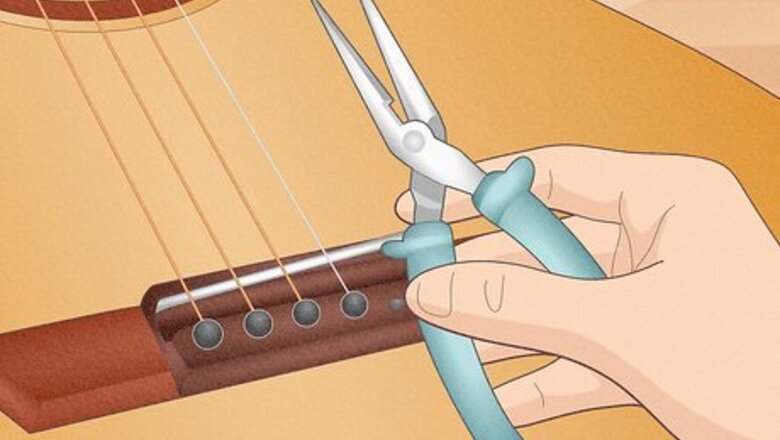
views
String Cutters or Pliers
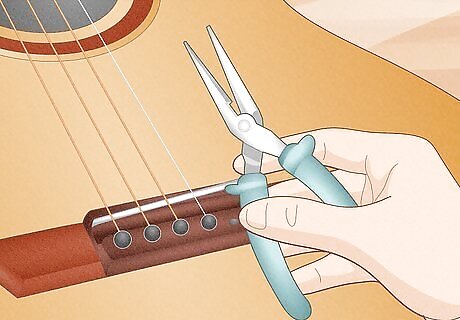
Find a set of string cutters or needle-nose pliers. If you work on guitars frequently, you likely have a pair of string cutters in your guitar bag. Any other wire cutters or needle-nose pliers will also work. If you're worried about damaging the bridge pin with your cutters or pliers, put a soft cloth over the head to protect it.
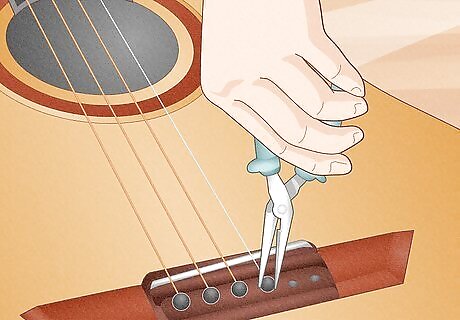
Close the mouth of your tool around the head of the bridge pin. Simply close the mouth of your pliers around the head, don't squeeze it. Lay the handles over the saddle of the guitar, in the direction of the strings. You can also do this from the other side, with the mouth of your pliers or string cutters facing towards the strings and fingerboard of your guitar.
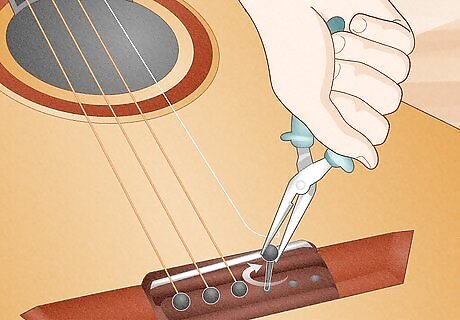
Twist and pull straight up to remove the bridge pin. The pliers simply give you more grip on the bridge pin. Rather than trying to pry the bridge pin out, lift straight up. If it seems stuck, give it a little twist, then try pulling again. If you try to pry the bridge pin out, you could snap it in two. You also risk widening the hole, which would mean the bridge pin won't sit securely in place when you pop it back in.
Tool-Free
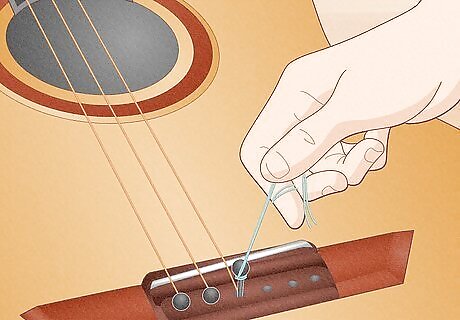
Tie a string around the bridge pin and pull the string to pop the pin out. If you don't have any tools handy but you can find a piece of string, tie a loop around the top of the bridge pin and pull it tight. Then, pull the end of the string up and out to release the bridge pin. Once you've pulled off one of the bridge pins, you can untie the string and use it again to pull out the other bridge pins.
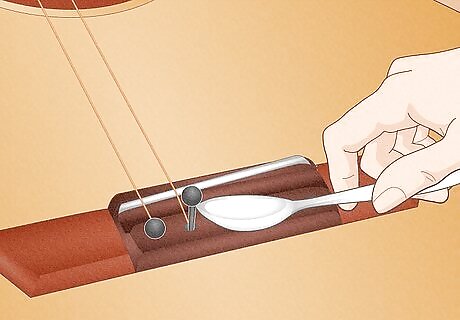
Use the end of a spoon to pry off the bridge pin. Take an ordinary kitchen spoon, preferably one with a relatively thin handle, and position the tip of the handle just under the head of the bridge pin on the string side. Rest your fingers on the sides of the bridge pin so you can catch it and keep it from flying off. Then, gently press the spoon down, using the saddle for leverage, to release the bridge pin. Be careful to be gentle when doing this—you don't want to gouge the bridge or knick the bridge pin itself. That'll make it more difficult for the bridge pin to stay in place once you put it in again. You can also use virtually anything that has a reasonably flat, straight edge, such as a ruler or a flat-head screwdriver.
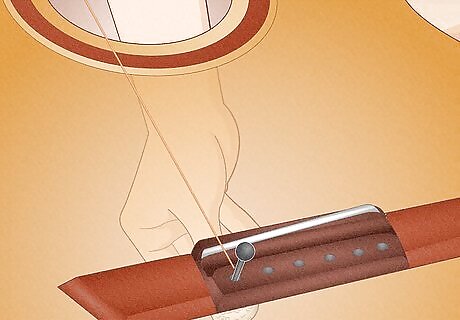
Push the pin out from inside the guitar with a coin. Place the coin in your fingers and slip through the soundhole of your guitar. Locate the tip of the bridge pin with your fingers and place the coin over it so the bridge pin is roughly in the center of the coin. Push the coin with your thumb to release the bridge pin. Be careful not to get your hand stuck in the soundhole. If it's a tight fit, you might want to stick to another method that doesn't require you to stick your hand inside your guitar.
String Winder
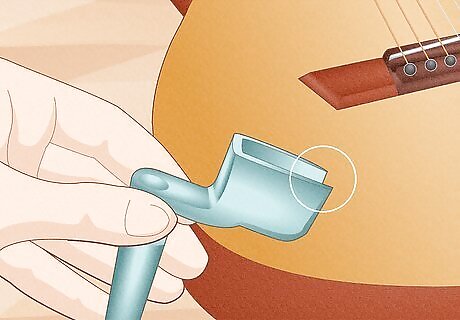
Locate the bridge pin puller at the end of your string winder. Many acoustic guitars come with a string winder that helps you easily wind the strings on your tuning pegs to string your guitar. The end is notched so that the bridge pins will fit perfectly into the notch. If you don't have a string winder, it's a worthy investment. You can buy them online or at guitar stores and they're typically between $10 and $20. The more expensive models may be battery-powered or come with a string cutter. String winding tools have a bridge pin puller, so you don't need a separate tool. Cheaper plastic string winders might not be durable enough to use as a sturdy bridge pin puller. You can still try it, but be careful not to break it. Metal string winders work better.
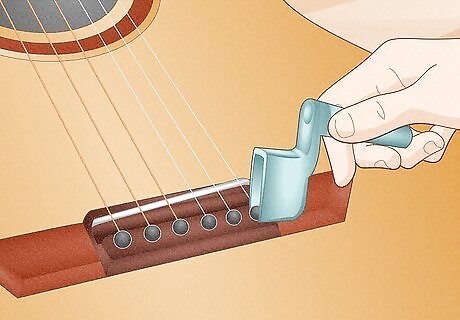
Fit the outside of the bridge pin puller around the head of the bridge pin. Turn your string winder so the open side of the bridge pin puller slot is facing the strings and fingerboard of your guitar. Then, slide the slot at the end of your string winder right at the throat of the bridge pin so the head is secure. If your string winder came with your guitar, the slot should fit your bridge pins perfectly. A string winder you bought separately should still work, but you might have to wiggle it around a little bit to make sure it's holding the head of the bridge pin securely. Put a business card along the bottom edge of your bridge, below the bridge pins, if you're worried about accidentally denting your bridge. This is more important if you're working with a metal string winder.
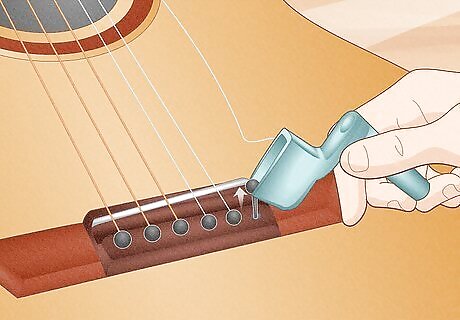
Press back against the bridge to gently pop the pin out. Wiggle the string winder around a bit to loosen up the pin, then press backward towards the curve in the notch to pry the bridge pin out. You might have to do this motion several times before the bridge pin pops out. Even with a business card, avoid applying too much force, or you could damage your bridge.

















Comments
0 comment